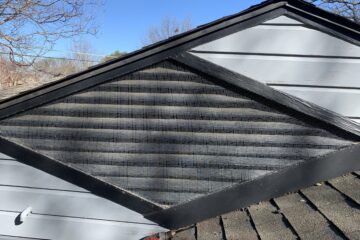Despite marketing claims of manufacturers, scientific testing has repeatedly shown ultrasonic repellers do not effectively drive squirrels away permanently. These electronic devices emit high-frequency sounds, around 25 to 55 kHz, that are imperceptible to the human ear but can be detected by squirrels. The loud, unpleasant noises are supposed to deter squirrels from approaching or cause them to flee from the area.
How Ultrasonic Repellers Work
The concept behind ultrasonic repellers is that the piercing sounds will be so unpleasant and disorienting to squirrels that they’ll avoid spaces where the devices are placed. The sounds may initially startle squirrels and produce avoidance behavior. However, several key factors limit their long-term effectiveness:
– Habituation – Squirrels, like other wildlife, can become accustomed to new sounds in their environment after the initial novelty wears off. Ultrasonic noises may perturb them at first, but squirrels will habituate and learn to ignore the sounds over time.
– Motivation – If squirrels are sufficiently motivated to gain entry to a space for food or shelter, they will tolerate ultrasonic deterrents. Hunger, establishing territory, and raising young can override their temporary aversion.
– Limited Range – Ultrasonic acoustic waves quickly weaken with distance. Sounds that repel squirrels at close range become ineffective just 10-20 feet away as the volume diminishes.
– Barriers – Sounds bounce and become muffled passing through walls, ceilings, vegetation, and other objects. This further restricts the area ultrasonic emissions impact.
For these reasons, peer-reviewed wildlife research has found ultrasonic deterrents have very limited utility for repelling squirrels once they have already identified an area as desirable territory. The sounds may temporarily disturb them but won’t result in permanent relocation or deterrence.
Ineffective Long-Term Solutions
There is no substitute for excluding squirrels by sealing up all possible entry points into a building. While ultrasonic devices aren’t harmful in and of themselves, relying on them gives homeowners a false sense that they are “doing something” about the problem while squirrel infestations persist and flourish.
If squirrel ingress points aren’t addressed, they will continue freely entering attics or walls, damaging insulation, chewing wires, and causing other issues. Ultrasonic emissions certainly won’t stop these behaviors. At best, the sounds may temporarily displace squirrels to another part of the property rather than eliminating site usage altogether.
The bottom line – ultrasonic repellers do not provide a standalone solution for permanently evicting squirrels or preventing long-term property damage. Don’t waste money on dubious devices claiming otherwise. Stop squirrels at the source by excluding them through professional sealing of entry points.
Tips for Effective Use
If employed judiciously, ultrasonic repellers can potentially complement exclusion efforts in limited circumstances:
– As temporary deterrents keeping squirrels away while sealing work is completed.
– Discouraging initial exploration when infestations are first suspected but sealing is not yet done.
– Deterring entry through small gaps that are difficult to fully seal.
However, ultrasonic devices should never be solely relied upon. Ongoing monitoring and maintenance of physical barriers are essential, regardless of any supplemental acoustic deterrents used. Habituation requires devices be moved frequently and used unpredictably to maximize efficacy. Even then, results will be short-term at best.
Consult Professional Wildlife Control
Reputable pest control companies will be upfront that ultrasonic repellers alone won’t solve squirrel problems long-term. There are no magic gadgets substituting for thorough exclusion of all possible entry points into the structure. This requires professional equipment, expertise, and diligence to find even small gaps.
Be skeptical of any control company claiming ultrasonic devices will permanently evict squirrels. Look for those emphasizing sealing and exclusion as the number one solution. Combined with professional removal of current infestations, sealing, and deterring future entry, ultrasonics can play a limited role minimizing squirrel activity on a property. But the devices do not warrant solo reliance.




